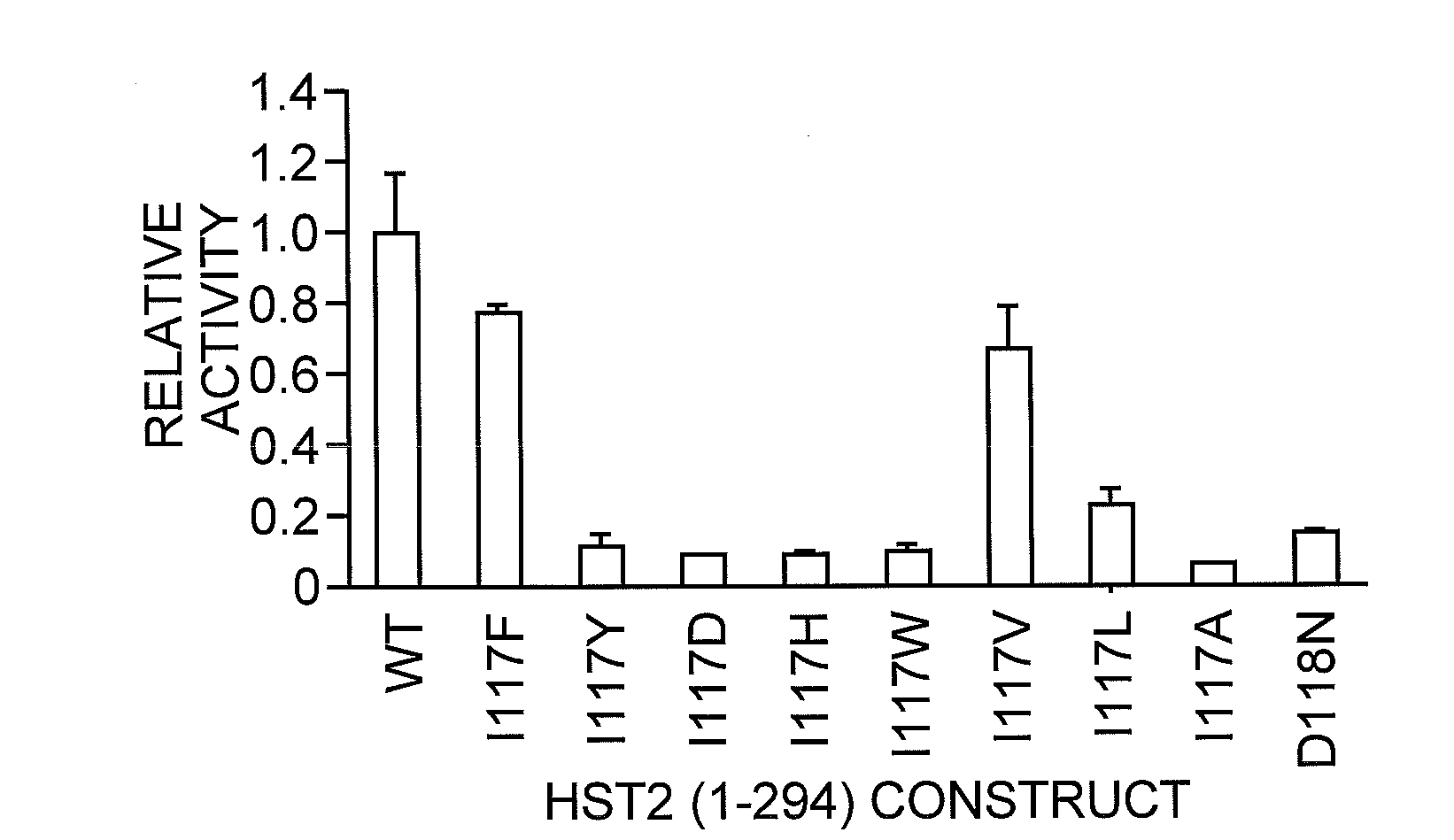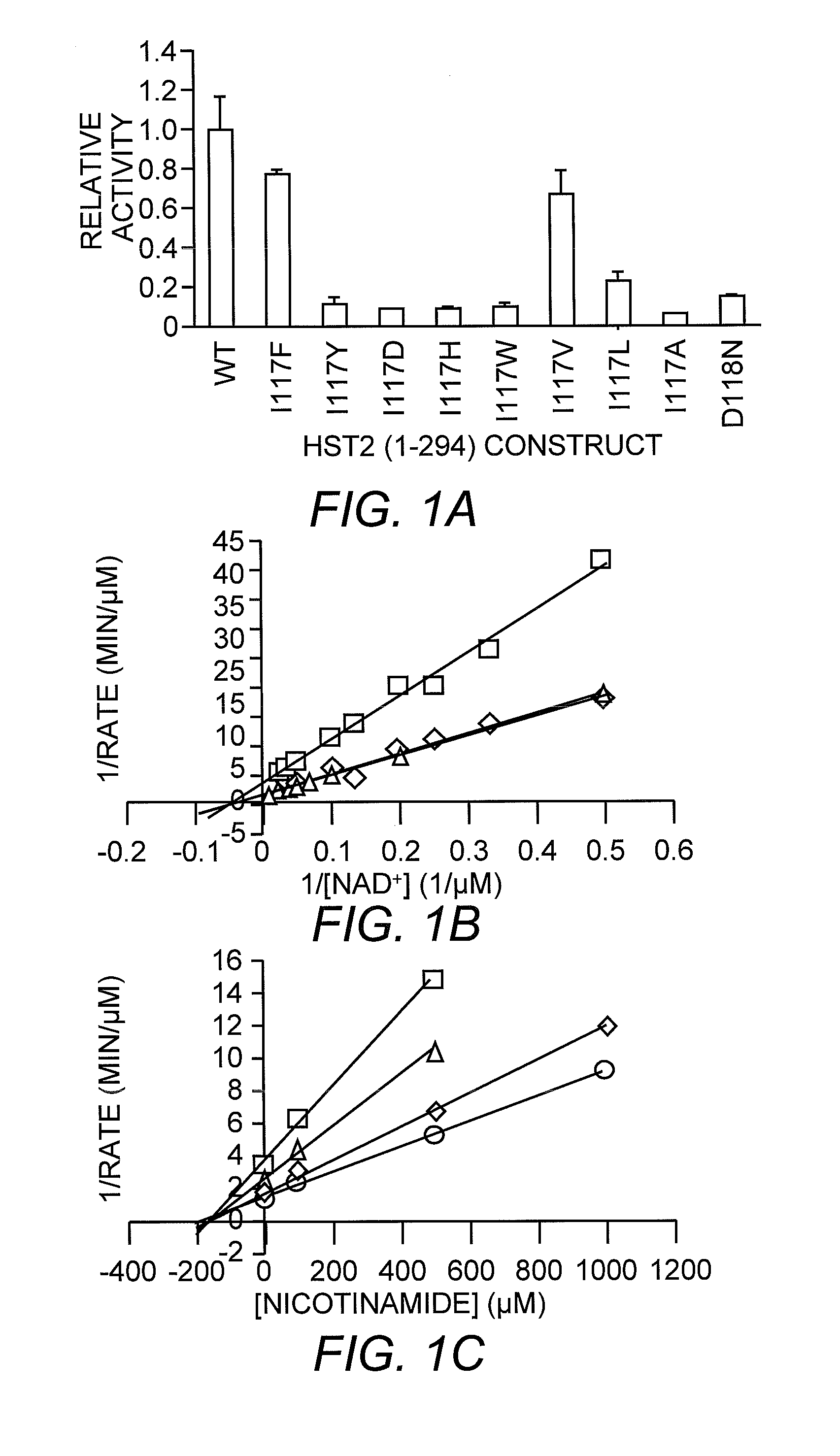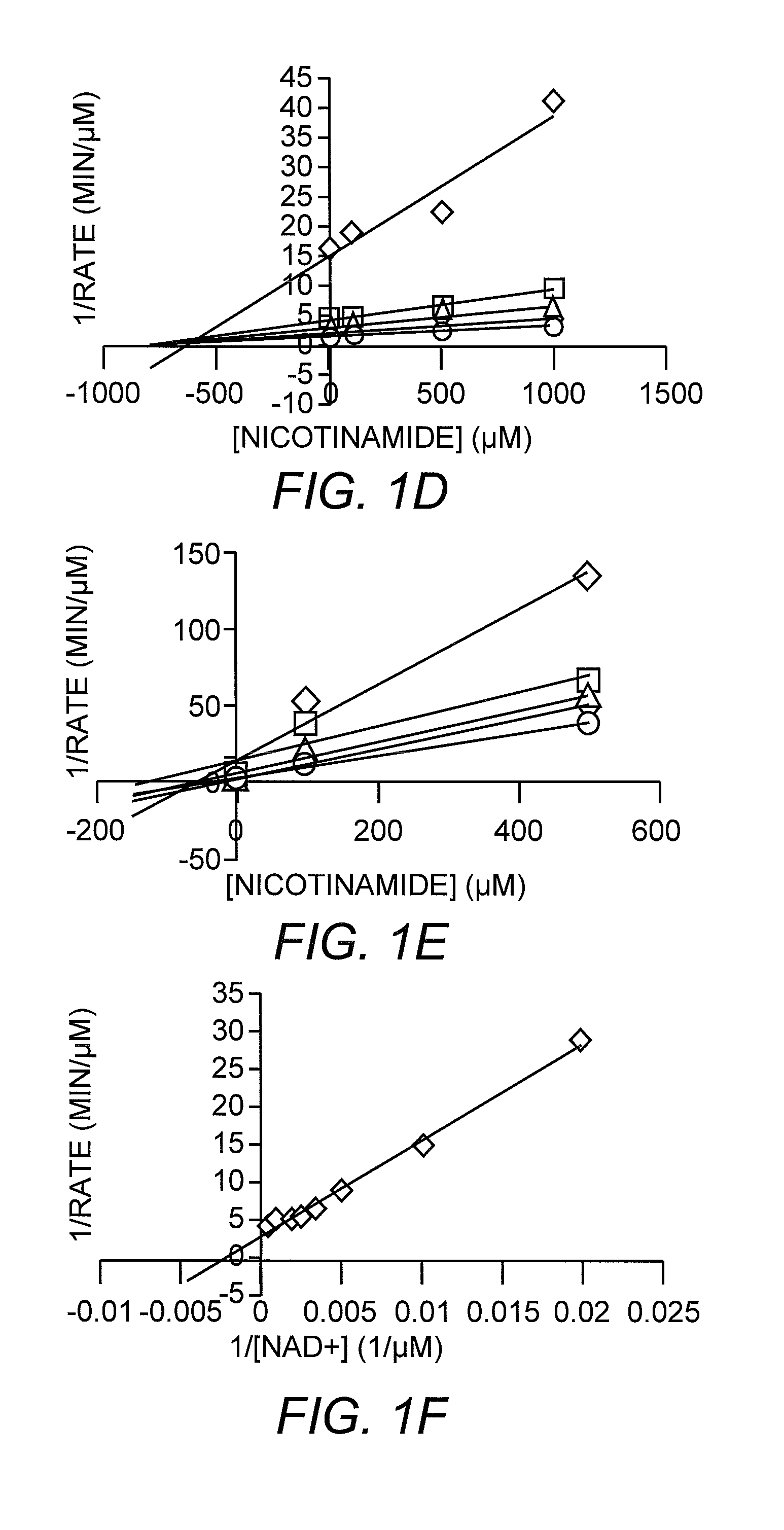Method for identifying a compound that modulates SIR2 protein activity
a technology of sir2 protein and activity, applied in the field of method for identifying a compound that modulates sir2 protein activity, can solve problems such as genetic instability and an aging-like phenotyp
- Summary
- Abstract
- Description
- Claims
- Application Information
AI Technical Summary
Problems solved by technology
Method used
Image
Examples
example 1
Materials and Methods
[0041]Protein Preparation, Crystallization and Structure Determination. The 64-residue C-terminal deletion construct of yHst2 (residues 1-294) and point mutants were purified and expressed according to established methods (Zhao, et al. (2003) Nat. Struct. Biol. 10:864-871). Point mutations in yHst2 (1-294) were generated from the pRSET-A plasmid overexpressing the N-terminal His6-tagged fusion protein with site-directed mutagenesis based on the QUIKCHANGE protocol from STRATAGENE (Papworth, et al. (1996) Strategies 9:3-4).
[0042]Crystals of the yHst2 / ADP-HPD / H4 and the yHst2 I117F / carba-NAD+ / H4 complexes were grown using the vapor diffusion method at room temperature and were obtained by equilibrating about 0.15 mM of the respective complex against a reservoir solution containing 2.0 M (NH4)2SO4, 100 mM Na citrate, pH 5.6, 200 mM K / Na tartrate or 2.0 M (NH4)2SO4 and 100 mM Na citrate, pH 5.5. To obtain nicotinamide bound complex, yHst2 / ADP-HPD / H4 crystals were so...
example 2
Structure of Nicotinamide Bound to an yHst2 / Acetyllysine / ADP-HPD Ternary Complex
[0045]The structure of a ternary complex of yHst2 bound to an acetyl-lysine 16 histone H4 derived peptide and carba-NAD+, a non-hydrolysable NAD+ analogue (Slama and Simmons (1988) Biochemistry 27:183-193; Slama and Simmons (1989) Biochemistry 28:7688-7694; Zhao, et al. (2004) supra) has been reported. The structure revealed that the acetyl group of the acetyl-lysine substrate hydrogen bonds to the 2′ and 3′ hydroxyl groups of the cyclopentane ring, presumably to help position the nicotinamide group in the highly conserved C pocket for hydrolysis, leaving the acetyl group inappropriately positioned for nucleophilic attack of the l′ carbon. A comparison of this structure with a ternary complex in which ADP-ribose replaces carba-NAD+, reveals that the ribose ring is rotated by about 90° relative to its corresponding position in carba-NAD+ with the 1′-hydroxyl group of the ADP-ribose ring pointing into anot...
example 3
[0049]The most significant difference between the nicotinamide-bound and free complexes was the presence of a nicotinamide molecule bound in the highly conserved D pocket, adjacent to the β-face of the ADP-HPD molecule in the nicotinamide-bound complex. This pocket was distinct from the C pocket of the nicotinamide moiety of the substrate NAD+. It was mostly hydrophobic and formed by residues E64, F184, and F67 around the pyridine ring, and F44 and I117 proximal to the carboxyamide moiety. Of the residues that formed pocket D, F44, F67, N116 and F184 were strictly conserved, and E64 and 1117 were only conservatively substituted, indicating that this binding site is important for nicotinamide regulation of Sir2 proteins. Since ADP-HPD is analogous to the proposed oxocarbenium intermediate, this conformation of bound nicotinamide is consistent with a nicotinamide molecule binding to the protein complex after the initial nicotinamide cleavage and reacting w...
PUM
 Login to View More
Login to View More Abstract
Description
Claims
Application Information
 Login to View More
Login to View More - R&D
- Intellectual Property
- Life Sciences
- Materials
- Tech Scout
- Unparalleled Data Quality
- Higher Quality Content
- 60% Fewer Hallucinations
Browse by: Latest US Patents, China's latest patents, Technical Efficacy Thesaurus, Application Domain, Technology Topic, Popular Technical Reports.
© 2025 PatSnap. All rights reserved.Legal|Privacy policy|Modern Slavery Act Transparency Statement|Sitemap|About US| Contact US: help@patsnap.com



